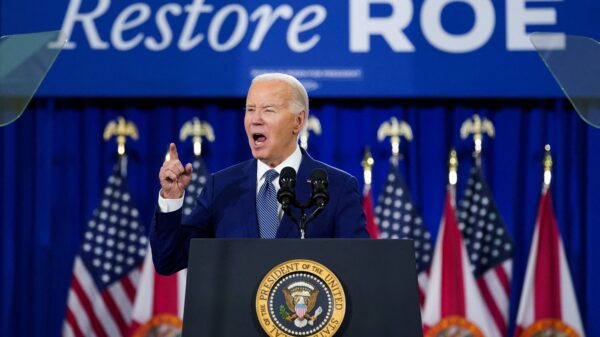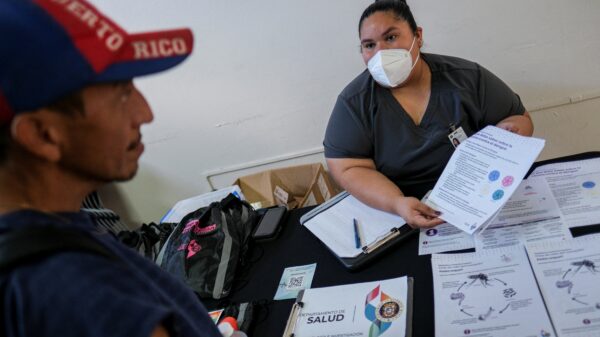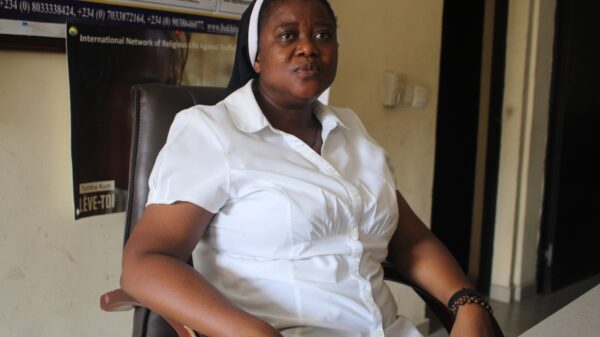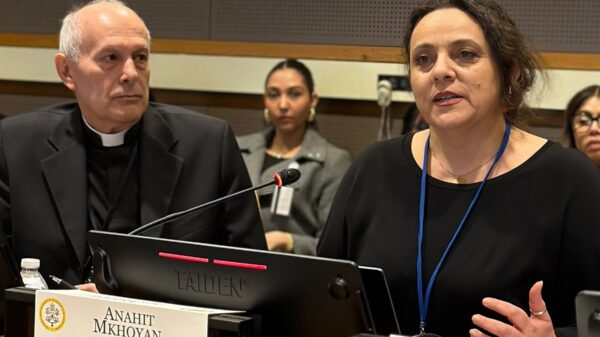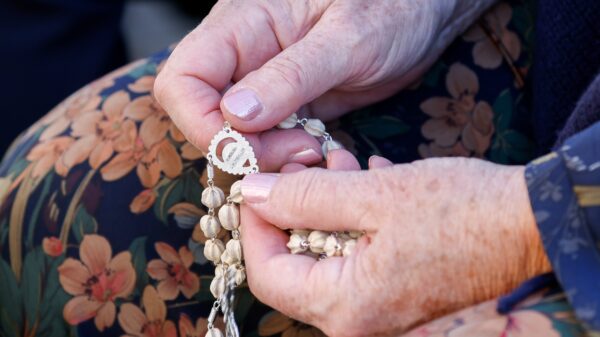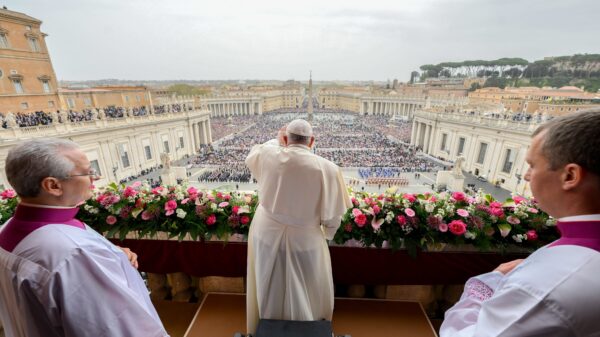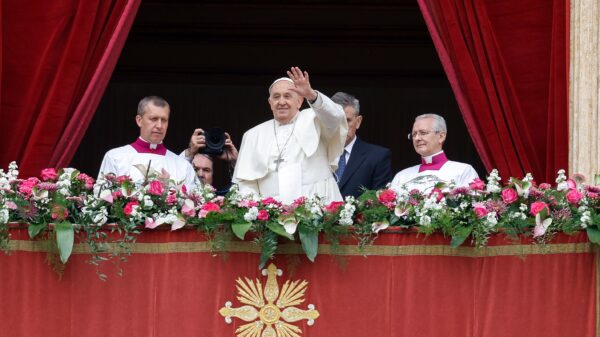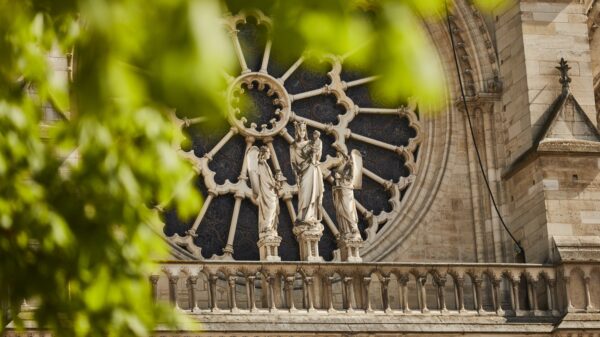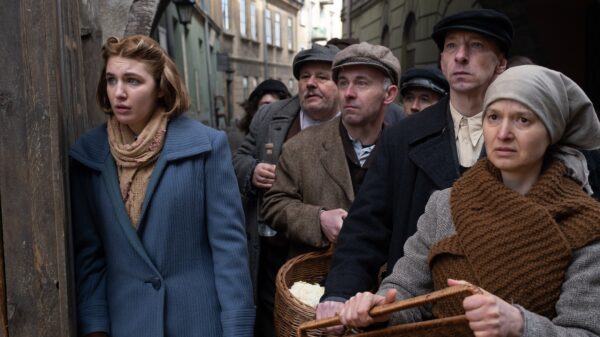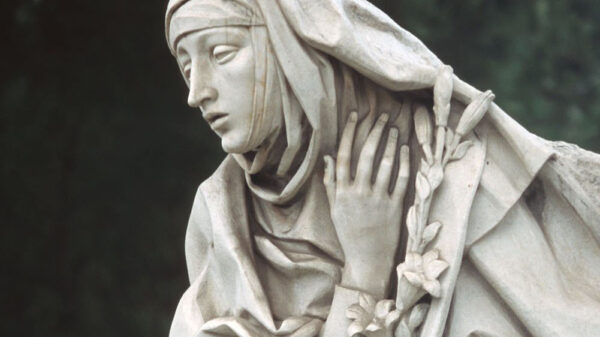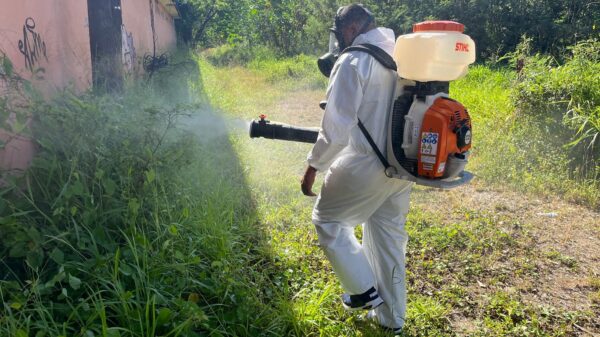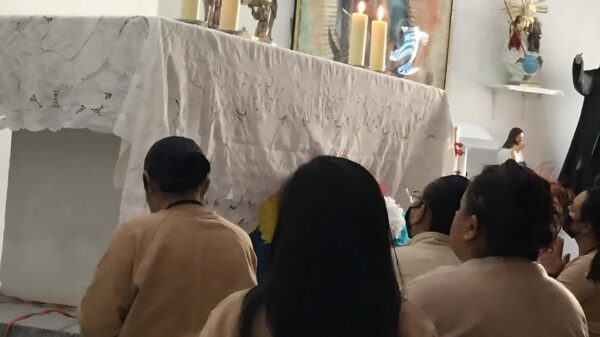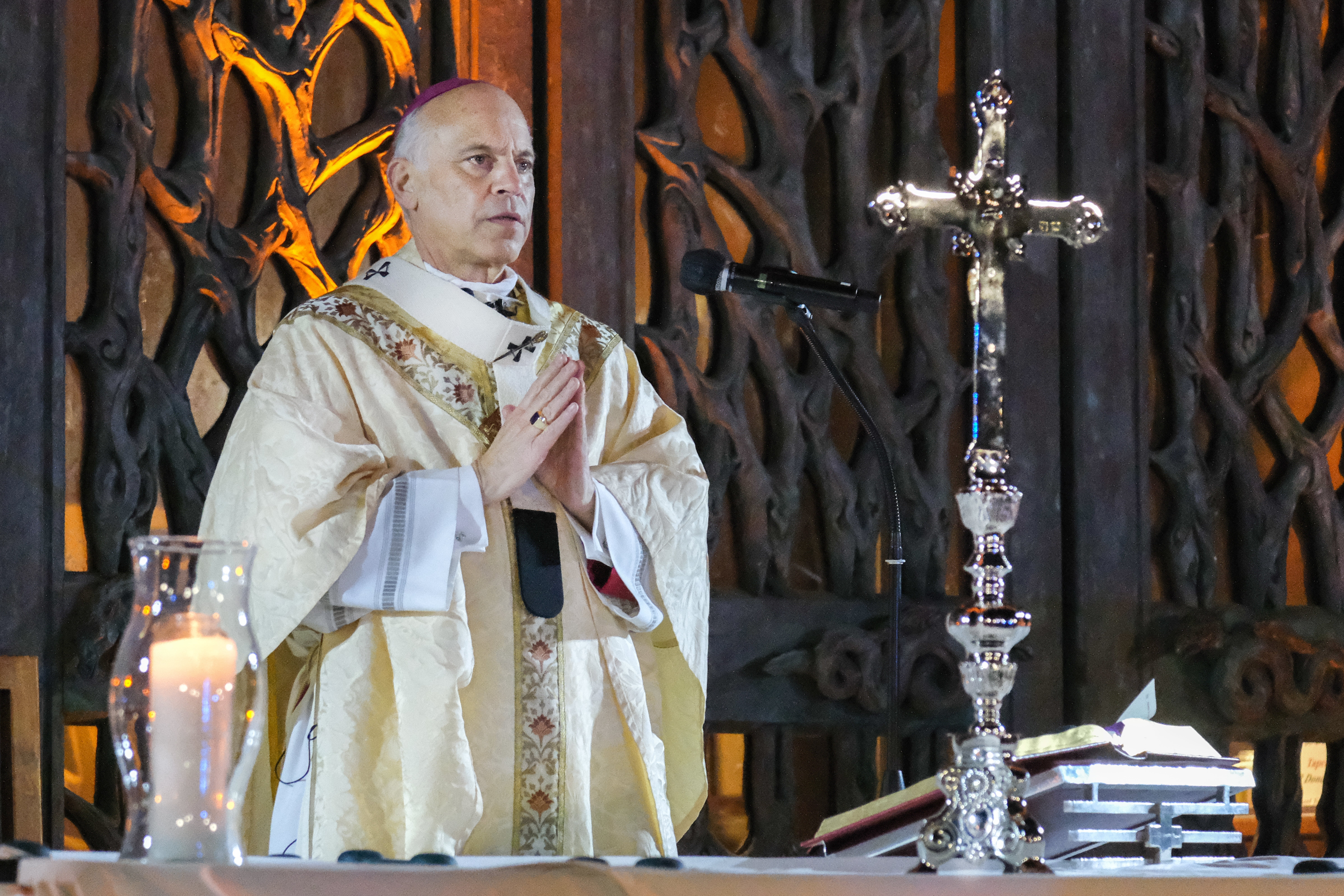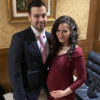BRYAN, Texas (OSV News) — While Pope Francis has been giving prominent roles to Eastern Catholic leaders in the Synod on Synodality, which recently concluded its first session in Rome, the bond between the 23 Eastern Catholic churches and the Latin Church also grows at the local level. And it is a bond the synod has encouraged Catholics and their pastors to cultivate and deepen ahead of it reconvening in 2024.
Mutual outreach between these different self-governing churches of the Catholic Church leads to greater catechesis and collaboration for the sake of the church’s mission. The Latin Church, headed by the pope as bishop of Rome, is the largest in size, with most Latin Catholics belonging to the prevalent Roman rite (and calling themselves Roman Catholics) among its other liturgical traditions, such as the Ambrosian or Congolese rites.
The various Eastern Catholic churches maintain their unique liturgical traditions, or rites, and their hierarchies and synods, while being in communion with their Latin Catholic brothers and sisters.
In India, Catholics of various rites live near each other, explained Father Roopesh Mathew, an Oblate of the Sacred Heart priest. “So they are aware about the different rites in the Catholic Church,” he told OSV News.
In fact, in the Archeparchy of Kottayam within India’s Kerala state, there are both Syro-Malabar and Syro-Malankara parishes — two distinct rites within one archeparchy.
The Oblates of the Sacred Heart are a congregation of missionary priests who primarily serve the Archeparchy of Kottayam. As there is no shortage of priests in the archeparchy, the Oblates also send priests on mission. When a bishop of a diocese is in need of a priest, he can contact the superior of the Oblates of the Sacred Heart to request a priest be sent.
One of these priests is Father Mathew, who belongs to the Syro-Malabar rite. In July 2023, he was sent to Bryan, Texas, to serve the Latin Diocese of Austin, Texas, as associate pastor of St. Joseph Catholic Parish.
In Bryan, the nearest Eastern Catholic parish is over an hour’s drive away. “Here the people only know about the Roman rite,” Father Mathew said. When he goes into St. Joseph Catholic School, he teaches the students about different prayers and rites in the Catholic Church.
“It is important to learn about the different rites, the different liturgies, the fruits of the liturgies, to know that more than one rite is there,” said Father Mathew. “Each rite in the Catholic Church originated in different countries and cultures. So it has its own traditional background. We have to understand the uniqueness of each rite and have an open mind to accept it,” he added.
Chorbishop Don Sawyer, pastor of Our Lady’s Maronite Catholic Parish in Austin, knows several Eastern Catholics (Maronite and Byzantine Catholics) who have been called “heretics” by Latin Catholics, he told OSV News. The chorbishop — a member of clergy who can confer minor orders but not priestly ordination — attributes this to lack of education.
“(They) just do not understand that Eastern Catholics are Catholics as much as they are themselves, but just older!” he added.
Although Eastern Catholics have their own bishops and liturgical forms, unlike their Orthodox Christian counterparts, they are in full unity with Latin Catholics through their communion with the pope.
Chorbishop Sawyer calls Maronite Catholicism, which originates out of Lebanon, “the best kept secret of the Catholic Church.” He acknowledged that Eastern Catholic bishops, priests and parishes must not “hide their lamps under bushel baskets.”
From distributing holy cards of St. Sharbel, a Maronite saint, to hosting tours of their church, Our Lady’s Maronite Parish reaches out to educate their neighbors about Maronite Catholicism.
A few years ago, Holy Trinity Catholic Seminary in Irving, Texas, sent two buses of seminarians to Our Lady’s Maronite Catholic Parish to experience the Maronite liturgy and enjoy a meal served by the parish. Also, confirmation groups — both Latin Catholics and even Protestants — often reach out to Our Lady’s Maronite Parish to come and tour the church.
On Nov. 5, the parish celebrated the institution of its chapter of the Knights of Columbus; many of the Knights’ friends and family were Latin Catholics experiencing the Maronite liturgy for the first time.
“This Mass is from the Holy Land,” Chorbishop Sawyer explains to visitors. “The strange language you’re going to hear is Syriac, Aramaic, what Christ spoke.”
Chorbishop Sawyer emphasized that there is a great deal of diversity within the Christians in the Holy Land. Although Christians currently make up less than 1% of the population, those Christians are from various churches: “Eastern Catholics, Latin Catholics, Eastern Orthodox, and they have some Protestants there,” said Chorbishop Sawyer.
Chorpbishop Sawyer hopes to see more acknowledgment of Eastern Catholic parishes and the richness they bring to the wider Catholic community, suggesting diocesan news outlets “could feature and do articles on Eastern Catholics.”
As it turns out, there is an interest among Latin Catholics to learn about their Eastern Catholic brothers and sisters.
Adrián Herrera is an associate director in the Latin Archdiocese of Galveston-Houston’s Office of Evangelization and Catechesis. Hererra’s role is adult faith formation for Spanish-speaking adults; he works with pastors, priests, parish catechetical leaders and directors of religious education. The archdiocese offers faith formation classes, which include courses on many subjects such as Scripture, Christology, the sacraments and church history.
When the courses discussed the Eastern Catholic churches, parishioners had questions.
“Well, I’m not the expert,” said Herrera. So he reached out to Father Elias Rafaj, who at the time served as pastor of St. John Chrysostom Byzantine Catholic Parish in Houston.
In 2019, Father Rafaj and Hererra collaborated on a workshop called “Orientale Lumen: Conociendo la riqueza de nuestra Iglesia Católica” (“Getting to Know the Richness of Our Catholic Church”). During the workshop, Father Rafaj taught curious Latin Catholics about the Eastern Catholic Churches, specifically the Byzantine Catholic Church.
Several of those taking the course visited St. John Chrysostom to experience the Byzantine Divine Liturgy, because Catholics of any rite or church are welcome to worship with and celebrate sacraments at any other Catholic church.
“If I were in a different diocese,” Hererra told OSV News, “I would look out for Eastern Catholic brothers and sisters, and talk to the priest and figure out: ‘What can we do so that the Latin- rite Catholics get to know you, get to know the richness and the history that you bring into the Catholic faith?'”
Raising awareness is an important first step. When asked how often she has to explain to Latin Catholics that yes, Eastern Catholics are Catholic, Ines Angeli Murzaku told OSV News via email, “A lot.”
Murzaku is a professor of religion and director of the Catholic studies program and founding chair of the Department of Catholic Studies at Seton Hall University in South Orange, New Jersey. She was baptized into the Italo-Albanian Byzantine Catholic Church in Rome. Currently living in Sparta, New Jersey, she attends Our Lady of the Lake Roman Catholic Parish as “there is no Italo-Albanian Byzantine Catholic Church where I live.”
“Many people, including faithful Catholics, are generally unaware of the history of the Eastern Catholic churches,” she said.
However, this is an area the ongoing Synod on Synodality wants to address when it reconvenes in October 2024. According to its Oct. 28 synthesis report, the synod asked for consideration of models “that render visible effective forms of unity in diversity” in “regions where the faithful of different Catholic Churches are present.” It also called for more reflection on the contribution Eastern Catholic churches can make to Christian unity, as well as interreligious and intercultural dialogue, and also called on pastors to “deepen mutual knowledge and recognition of the respective Traditions.”
Murzaku said, “This liturgical and cultural diversity contributes to a more inclusive and universal Catholic identity.”
Even beyond getting to know the diversity within the global Catholic Church, Murzaku sees a bigger picture: reaching out to Eastern Orthodox churches. She believes that Eastern Catholic churches’ “experience of remaining in communion with the bishop of Rome while preserving their Eastern traditions can serve as a model for discussions on church unity and theological reconciliation.”
Kiki Hayden writes for OSV News from Texas. OSV News national news and features editor Peter Jesserer Smith contributed to this report.
NOTES: A link to the synod synthesis report can be found here: https://www.synod.va/content/dam/synod/assembly/synthesis/english/2023.10.28-ENG-Synthesis-Report_IMP.pdf


